Windows operating system allows you to change the Screen Resolution. But it offers some fixed numbers. Some users want the freedom to choose the best display settings for their PC based on their monitor so that they adjust the screen resolution, color depth, refresh rate, etc. This article takes you through the process of creating and setting custom resolution on Windows 11 or Windows 10.
Is it safe to use Custom Resolution?
You can create & set custom resolution but in some cases, you can overclock monitor refresh rate. Also, it has been found that most screens work well at their native screen resolution. So, it’s advisable to stick to the Recommended screen resolution or at most the pre-set ones.
How to create and set Custom Resolution on Windows 11/10
We’ll see the process of creating and setting custom resolution on Windows computer using the following third-party free tools:
- NVIDIA Control Panel
- AMD Catalyst Control Center
- Intel Graphics Command Center
- Custom Resolution Utility.
By changing or customizing the resolution settings, you can change the look of your screen including Icon Size, Font Size, and Color depth. Which tool to use would depend on your hardware specs and whether your system uses Intel, AMD or NVIDIA.
1] NVIDIA Control Panel
Right-click the empty space on your Windows desktop and select NVIDIA Control Panel entry to open the NVIDIA Control Panel.
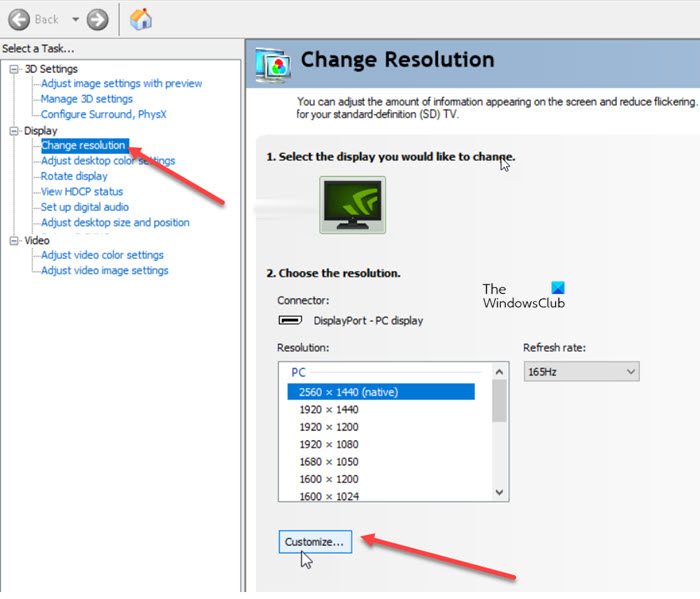
Thereafter, in the window that appears, select Change resolution description under the Display heading. Instantly, you’ll be directed to the change resolution panel. Make sure the monitor you wish to create a custom resolution for is selected under the text ‘1. Select the display you would like to change. Hit the Customize button.
When the new window appears, click the Create Custom Resolution button.
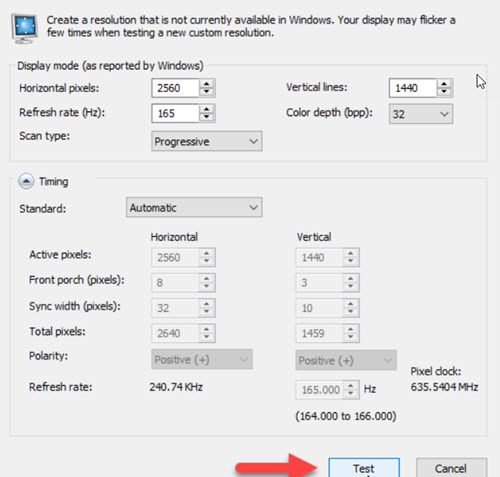
Add the values you wish to create for your display. Then, hit the Test button when you are ready to test the new display mode.
If the new mode is accepted by your display, you will see a window, prompting you to confirm the new resolution. Select Yes if all looks good and you are satisfied with saving the new preset.
If the new mode passes the test, you’ll see it listed in the Resolution list for your display.
2] AMD Catalyst Control Center
To create custom display modes using the Custom Resolutions feature, access the AMD Catalyst Control Center. For this, right-clicking on your desktop and selecting AMD Radeon Settings.
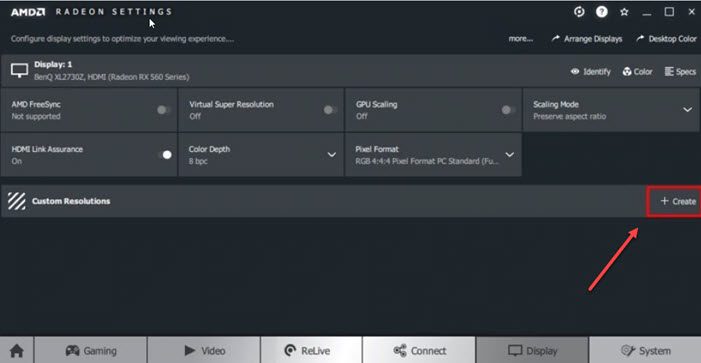
Next, select Display and hit the Create button located under the Custom Resolutions menu. If there are more than one display listed, click Create then select the corresponding display that the custom display mode will be created for.
Custom Resolutions offers an array of display settings you can choose from. Enter in the desired value for each applicable setting, then click Save.
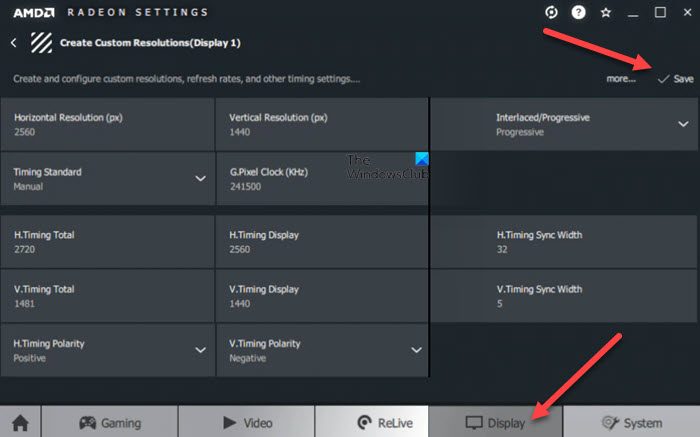
After clicking Save, Radeon Settings will check the compatibility of new settings with the display. If compatible, the new settings will be saved as a preset under the Custom Resolutions menu.
3] Intel Graphics Command Center
Inside the Windows Search box, type Intel Graphics Command Center. Click the Intel Graphics Command Center icon to open the application.
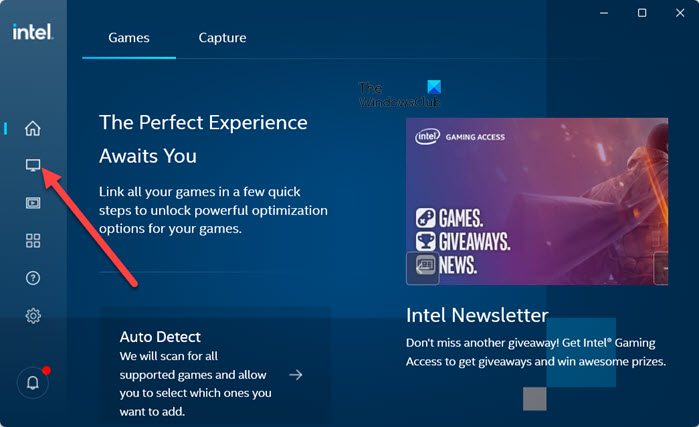
Choose the Display tab as shown in the image above. In the Display General Settings, click the Custom button located next to the Resolution setting.
If prompted by a warning message, click Okay to proceed.
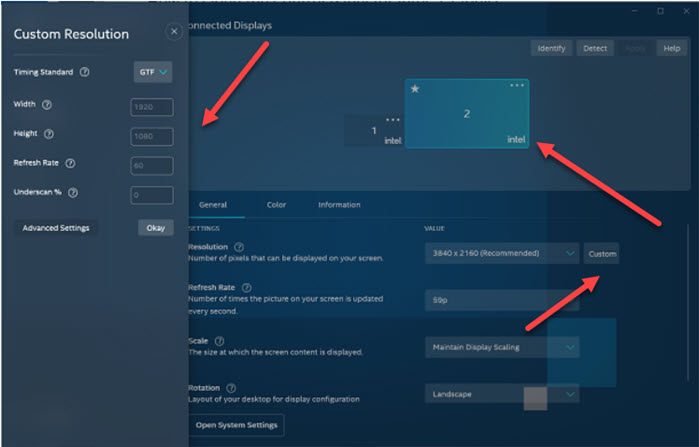
When the new window appears with Basic Custom Resolution settings. If desired, click Advanced Settings for more options.
Here, choose the custom resolution or mode values as you desire. Click Yes to accept the changes.
However in recent versions of the Intel Graphics Command Center you may not see this setting; esp. if your hardware that do not support them.
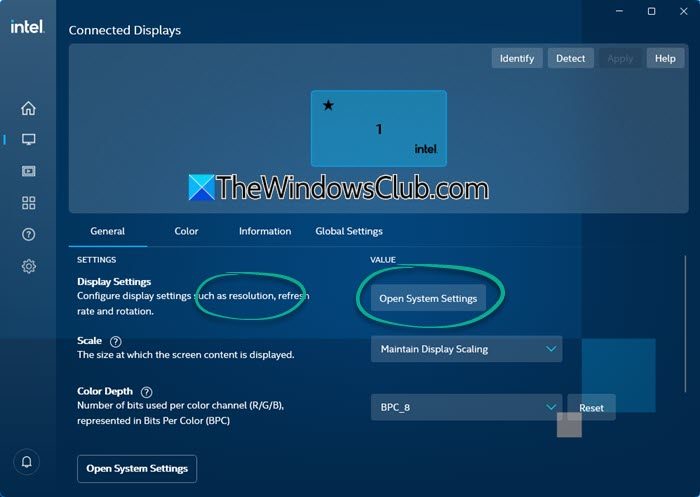
You will instead see a button to open Windows System Settings where you can change the resolution to only the pre-set ones.
TIP: You can also change the Display Resolution using CMD or Script and try to set a custom screen resolution.
4] Custom Resolution Utility
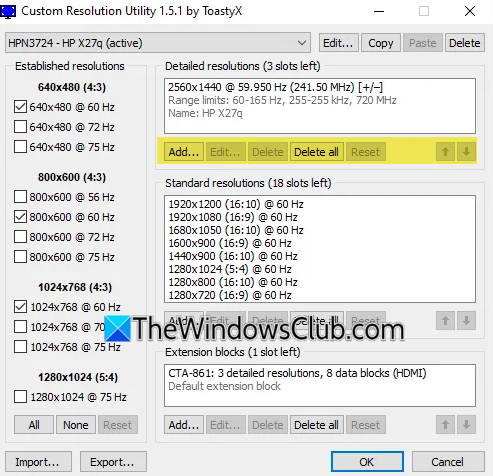
Custom Resolution Utility (CRU) is an EDID editor that focuses on custom resolutions. It lets you add custom resolutions, remove unwanted resolutions, edit FreeSync ranges, and more by creating software EDID overrides in the registry. It does not modify the hardware. You can download it here.
What does Custom Resolution Utility do?
Custom Resolution Utility (CRU) is an EDID (Extended Display Identification) editor, a type of signal intended to transmit native resolution, focusing on custom resolutions. it shows you how the monitor defines resolutions and other capabilities and allows you to tweak it to your liking.